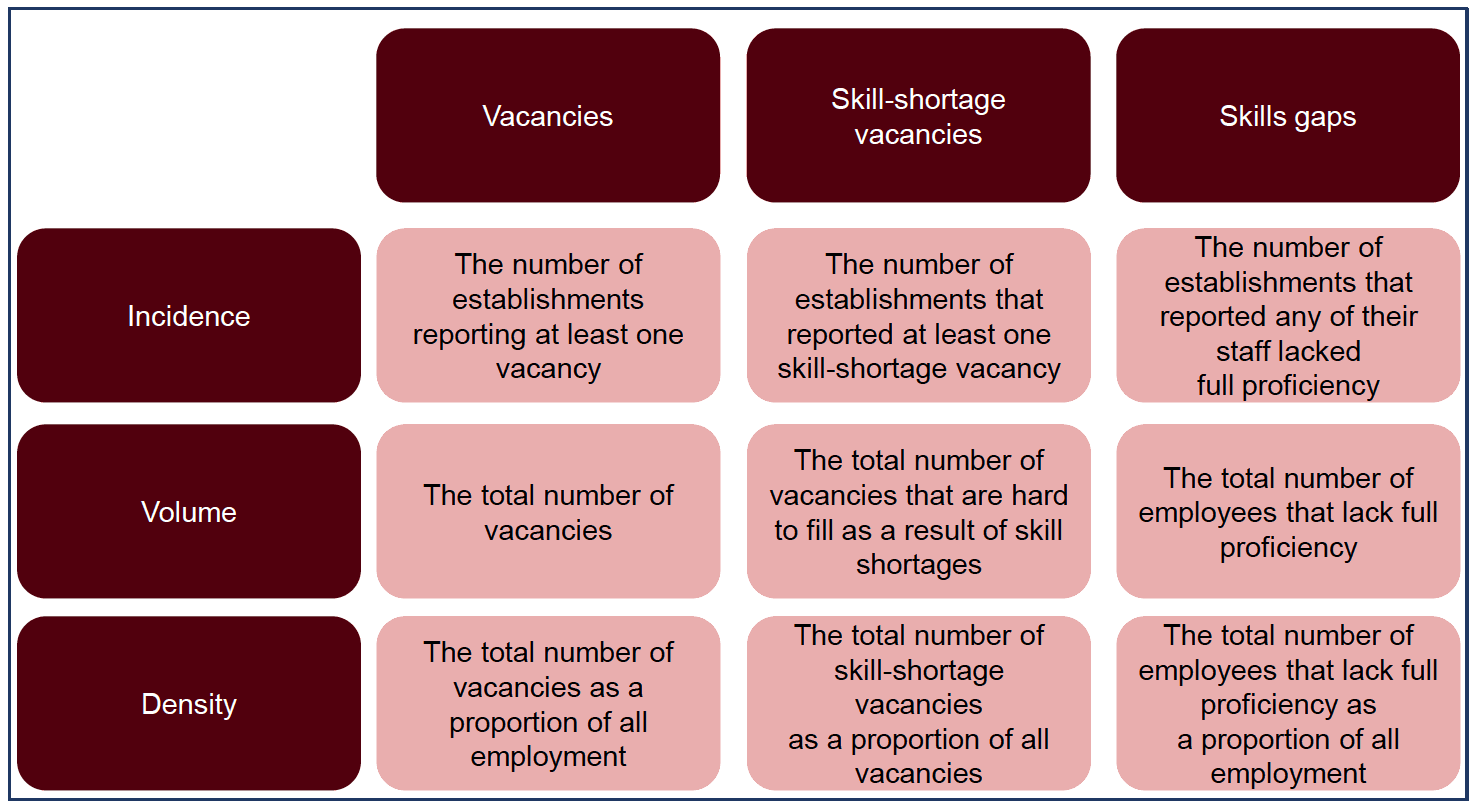Scottish Employer Skills Survey 2020
Results from the Scottish Employer Skills Survey 2020.
Introduction
The Scottish Employer Skills Survey (ESS) 2020 is a large-scale telephone survey of 3,497 employers in Scotland. It provides labour market information on the skills challenges faced by employers in Scotland, including:
- The external skills challenge: recruitment and skill-shortage vacancies;
- The internal skills challenge: skills gaps, under-utilisation of skills and the need for upskilling;
- Training and Workforce development;
- High Performance Working practices; and
- Employers' response to COVID-19.
The publication of the Scottish ESS follows a longstanding UK-wide ESS series (including Scotland) which was conducted biennially from 2011 to 2017. The 2020 survey was undertaken within the context of the COVID-19 global pandemic. Fieldwork was conducted between 20th October and 22nd December 2020, during which period the level of restrictions in different areas of Scotland were under constant review and changing frequently. At the start of fieldwork, after a summer of the economy gradually re-opening, the Scottish 'Central Belt' was back under tighter restrictions and all bars and restaurants were closed. A COVID-19 protection level system came into effect on 2nd November, with the worst-hit areas at that point in Level 3. A week later many were moved to Level 4, with the system regularly reviewed, and restrictions tightened or relaxed in different areas throughout fieldwork.[1]
Issues that employers faced during this time included:
- Forced workplace closures;
- The logistics of enabling home working;
- Limitations on people's movements ("stay at home" orders and reduced movements during periods where restrictions were lifted);
- New legislation to make workplaces "COVID-secure"; and
- Access to support from Scottish, UK and Local Government (including the Coronavirus Job Retention Scheme (CJRS), Self Employed Income Support Scheme (SEISS), business loans, tax relief and cash grants).
Further information about the ESS method can be found in the Methodology section of this release and the accompanying Technical Report. This is an Official Statistics release covering the key statistics in the survey. Further data are available in published data tables accompanying this report on the Scottish Government website. Accompanying 'Background Tables' include underlying data used in the report and the 'Additional Tables' provide a more extensive set of data collected in the survey.
Reporting conventions
The terms "establishment", "employer" and "workplace" are used interchangeably throughout this report to avoid excessive repetition.
The survey population is UK businesses with 2+ employment; this means businesses with at least two people working on payroll including working proprietors. When reporting volume and density measures, we typically refer to 'employees' throughout the report rather than employment.
Where comparisons are made across regions, this is referring to the Regional Outcome Agreement (ROA region). 'Appendix A – Definitions' shows how local authorities match to these region categories.
Throughout the report unweighted base figures are shown on tables and charts to give an indication of the statistical reliability of the figures. These figures are always based on the number of establishments answering a question, as this is the information required to determine statistical reliability. This means, for example, that where percentages are based on "all vacancies" (such as the percentage of all vacancies which are hard to fill) the base figure quoted is the unweighted number of establishments with vacancies.
In tables, "zero" is denoted as a dash ("-"); and an asterisk is used ("*") if the figure is larger than zero but less than 0.5%.
In tables and charts, figures with a base size of fewer than 30 establishments are not reported (a double asterisk, "**", is displayed instead), and figures with a base size of 30 to 49 are italicised and should be treated with caution as the margin of error for these results is larger and therefore the results are less statistically reliable.
This report provides a descriptive overview of the key statistics from the survey. All differences referred to in the report commentary are statistically significant at the 95% level of confidence. This applies to differences between survey subgroups, such as region, size and sector, and also to differences over time.
Throughout the report the terms incidence, volume and density are used regarding vacancies, skills-shortage vacancies and skills gaps. They are defined as follows:

Contact
Email: FHEstatistics@gov.scot
There is a problem
Thanks for your feedback